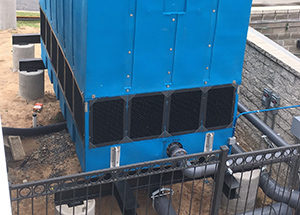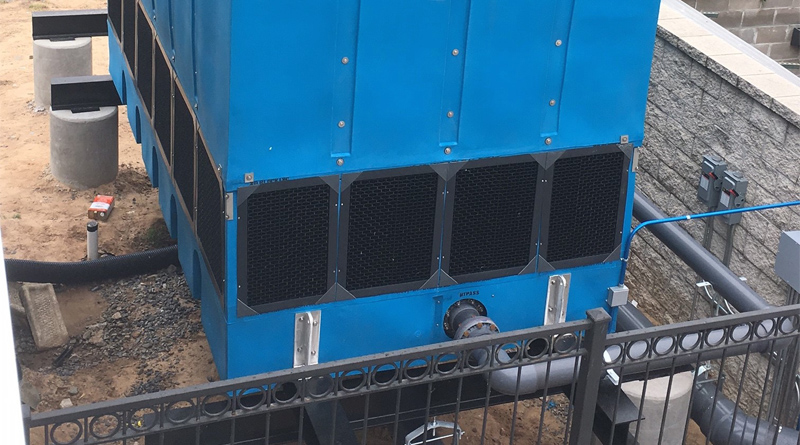New Cooling Towers Protect Hospitals’ Low Infection Rates
A new Center for Disease Control and Prevention (CDC) study involving 196 cooling towers nationwide found that 84 percent contained Legionella DNA, indicating that the dangerous bacteria that causes a severe, even fatal, type of pneumonia were present or had been at some point. This means the real question is not if there will be another outbreak, but where and when it will occur.
“During 2000–2014, passive surveillance for legionellosis in the United States demonstrated a 286 percent increase in reported cases per 100,000 population,” stated the CDC website.
The CDC also estimates that about 5,000 cases of Legionnaires’ disease are now reported each year in the United States, and keeping Legionella out of water systems in buildings, with cooling towers a noted risk, is critical in preventing infection.
In response, HVAC contractors now are pairing chillers and high-performance plastic cooling towers with new anti-microbial options that significantly reduce the infection risk.
Controlling Pathogen Growth
Throughout the U.S. and most of the world, the mainstay of large cooling systems remains the traditional HVAC combination of chillers, air handlers and cooling towers. Cooling towers have a long history of effective use in expelling heat from the water used in many commercial and industrial applications that involve chillers.

However, it is well established that, under typical operating conditions, cooling towers can propagate Legionella. The design of many cooling towers creates pockets where water may stagnate, a condition that can lead to microorganism development.
This has recently led ANSI/ASHRAE to publish its Standard 188, Legionellosis: Risk Management for Building Water Systems, which documents new risk standards and requirements for the design of new buildings and the renovations to existing structures.
“All facilities with HVAC or process cooling systems need to be aware of Legionnaires’ disease and handle any concerns about it,” said Rick Hill, facilities director at Arkansas Surgical Hospital, a physician-owned hospital specializing in joint and spine surgery in Central Arkansas. “There have to be good procedures in place to prevent or control it.”
When it was time to replace an air-cooled chiller at Arkansas Surgical Hospital, Steve Keen, president of Powers of Arkansas, the HVAC contractor responsible for the hospital project, recommended and installed a water-cooled chiller, paired with an advanced cooling tower with unique anti-microbial properties.
“Legionella is always a concern for HVAC systems using a cooling tower and anywhere you have water exposed to the atmosphere,” said Keen. “The Delta Cooling Towers‘ anti-microbial properties will help prevent that type of growth and exposure to patients and staff.”
Delta Cooling Towers, which pioneered the HDPE (high-density polyethylene) plastic cooling tower in the 1970s, recently introduced a line of towers constructed of anti-microbial resin, which is fully compounded into the base cooling tower structural material and casing. The cooling tower fill and drift eliminator are also made from anti-microbial PVC.
“We decided that since we were replacing the air-cooled chiller with a water-cooled chiller, we wanted a cooling tower that aligned with our philosophy of protecting patient safety,” said Hill, who advocated for the anti-microbial technology and found support for it among his hospital’s leadership. “We want to maintain one of the lowest infection rates among hospitals in the country.”
Arkansas Surgical Hospital already boasts a very low infection rate of under 0.3 percent, compared to a national average of 3 percent among U.S. hospitals.
By proactively making the switch to an advanced anti-microbial tower cooler, paired with a very high-efficiency HVAC chiller, the hospital is also significantly reducing energy costs, which was also a prime consideration.
“Our previous air-cooled HVAC system required a lot of electricity,” added Hill. “With the water-based cooling tower and very efficient chiller, however, we expect to save tens of thousands of dollars annually in energy costs.”

